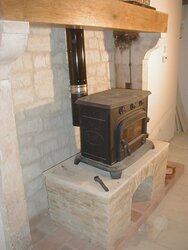I installed a wood-burning stove in my big old house in Normandy. The manufacture says it has "Nominal Heat Output of 15kW". But I found (during the winter) that it raised the room temperature much less than 6 kW of electric heating.
Is there an industry-standard definition of "Nominal Heat Output" or "Nominal Power Output"?
Or is it simply what the manufacturer chooses to call the stove?
Many thanks for any advice!
Martin
Is there an industry-standard definition of "Nominal Heat Output" or "Nominal Power Output"?
Or is it simply what the manufacturer chooses to call the stove?
Many thanks for any advice!
Martin


